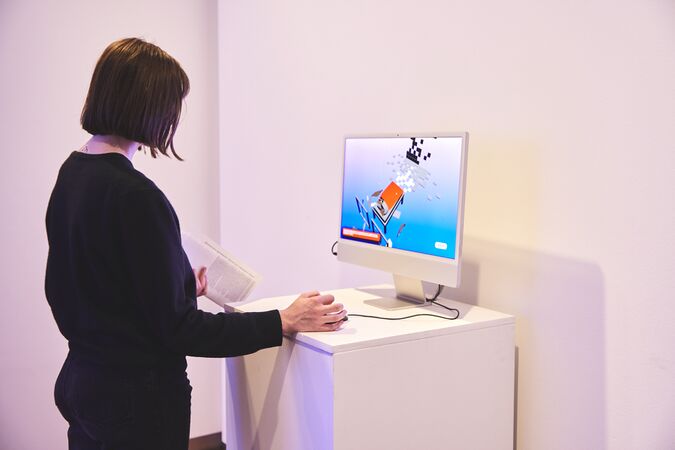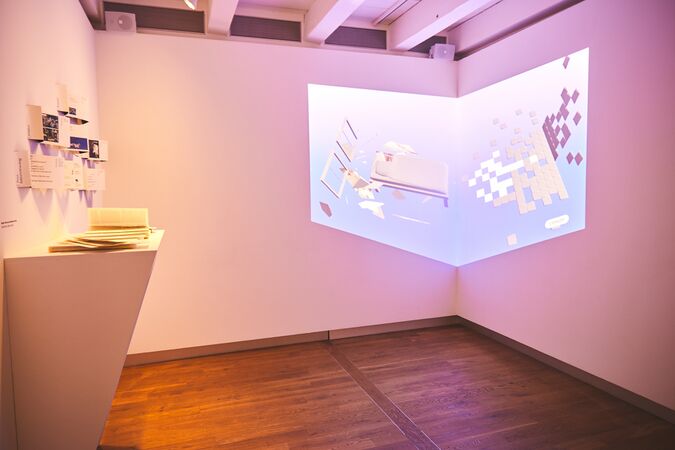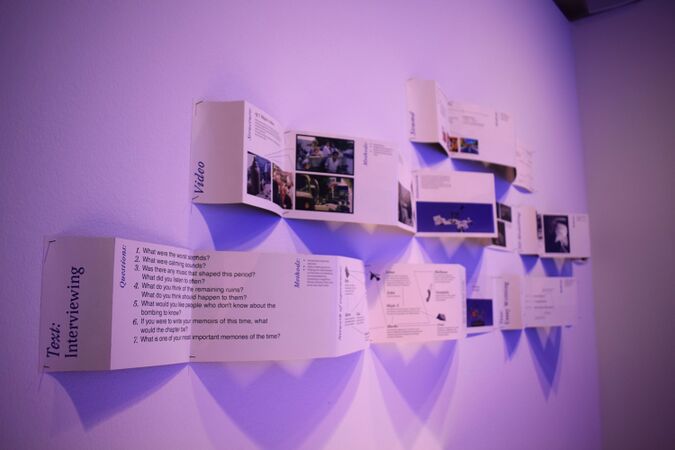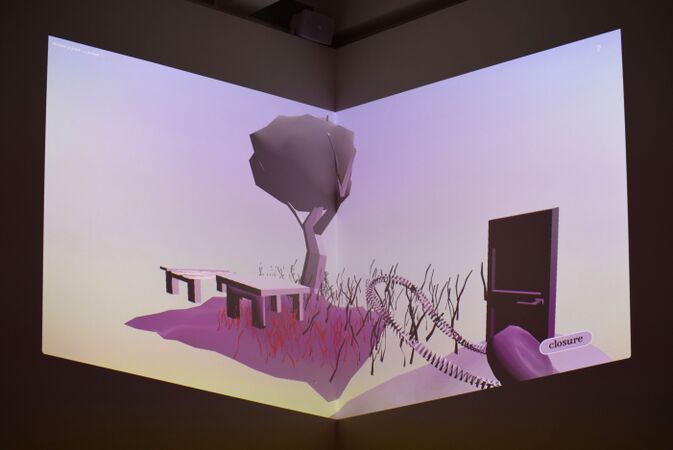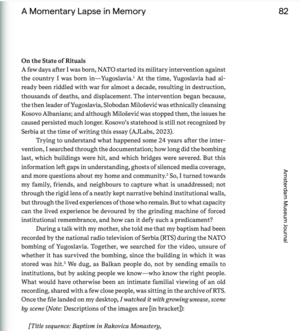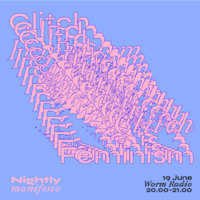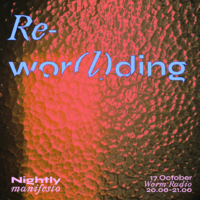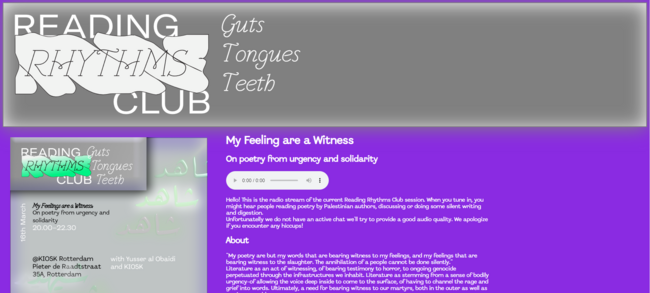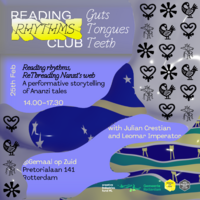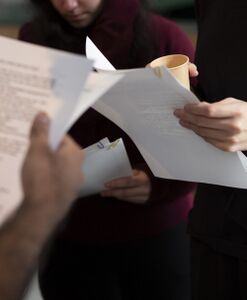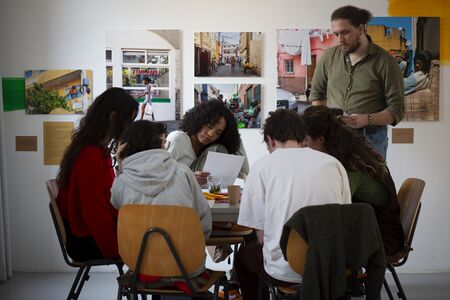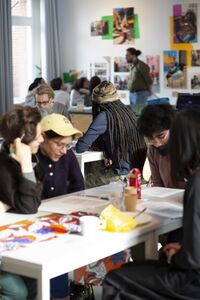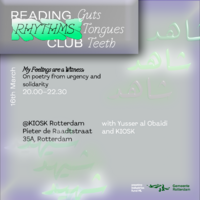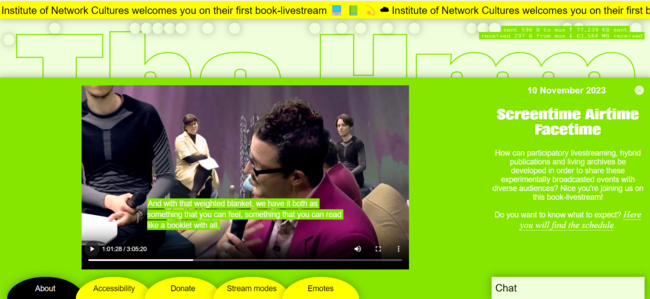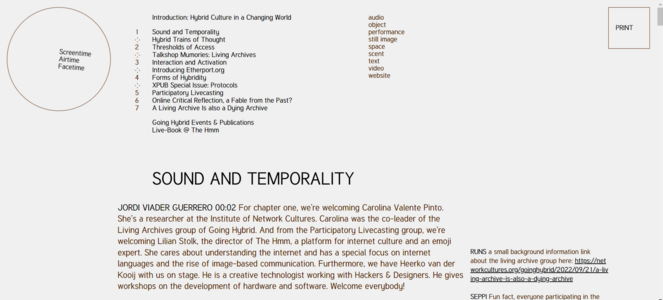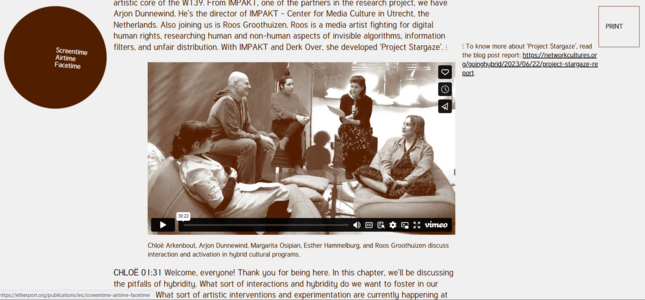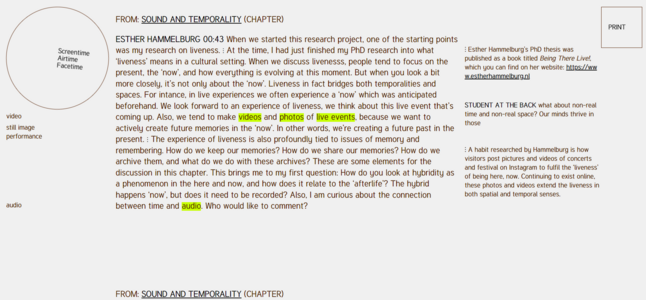Work Outside XPUB and Correlations
Momentary Lapse in Memory
Momentary Lapse in Memory is an interactive digital environment concerning the memory landscape of the 1999 NATO bombing of Yugoslavia. It investigates the impact of ephemeral factors on the archival practice. By doing so, it makes space for the unreliable mechanisms of both memory and its transmission, to steer and sway.
☞ Explanation of the project ☞ [1]
☞ Link to project ☞ [2] if it says it took too long to respond just refresh the page. Take note there is sound on the website!
Essay
- I wrote a lyric essay for Amsterdam Museum Journal's edition War, Conflict and the City [3] under the title A Momentary Lapse in Memory: An Inquiry into (Re)Memory and Trauma Embodiment [4]
Abstract
This essay investigates the impact of the archival practice on oral histories of conflict. Specifically, it asks to what capacity
can the lived experience be devoured by the grinding machine of forced institutional remembrance, and how can it defy such a
predicament? The inquiry to this question was studied through the oral history of the author’s friends, family and neighbors
concerning the 1999 NATO bombing of Yugoslavia. This military intervention was done in response to the oppressive regime of
Slobodan Milošević and remains fresh in the Serbian collective memory. Utilizing qualitative generative interviews, a case study
of the author’s parents’ approaches to archiving, and personal footage recorded by the Radio-Television of Serbia, the paper
examines differences between institutional and personal archival practices. The analysis displays that institutional remembrance
can claim the lived experience through collective memory, which is reinstated by commemorative practices and archiving.
In contrast, oral histories of conflict result in a different type of narrative-building and remembering. They are characterized by mechanisms such as collective editing, transmission, and nonlinearity, which resist standardization and instrumentalization.
This paper advocates for reconsidering static preservation-oriented modes of institutional archiving, proposing instead, to
embrace non-reproductible aspects or the unreliable of oral history.
- Related to: Archives, Oral History, Trauma, Lyrics essays
Nightly Manifesto
☞ Glitch Feminism Manifesto
- Questions of existing and expressing oneself online
- How glitches and errors can be a way of resisting
Here is what I wrote more about it on my page Notes, Thoughts and Annotations:
Read this manifesto for the radio show Nightly Manifesto I host with Julia Wilhelm. It really spoke to the experience I had growing up in predominantly queer spaces on Tumblr, and the liberty that offered compared to the real world.
I like that Legacy proposes that we should use
AFK (away from keyboard) instead of
IRL (in real life) so as to not prioritize real life and say that the lives we live digitally are 'lesser than'.
After all, so much happens online that has consequences on the lives we live afk and vice versa.
Politically, socially, economically... to name a few.
Legacy's idea of not being named, working from the point of invisibility as a strategy to enact change is also something that makes me quite excited.
The idea of the glitch and error as being this disturbing forces that dismantle and confuse the system is also very seductive (although I did start thinking about the fact that even errors are named).
|
☞ Rewor(l)ding: an episode of improvised storytelling. Parameters for this improvisation were: drawing 2 genres which the story will be told + drawing a person, object or phenomena that will interject into the storyline of the object.
The output was something like a fever dream, it was incredibly hard to keep track of new elements of the story while also just hearing and witnessing them on air. As a result the story was mysterious and confusing. The music I was assembling live impacted the storytelling quite a bit, as it provided a background of eerie and haunting sounds that informed how we speak...
- We repeated this format some months after, this time setting some fixed parameters for the sake of not being confused. The predetermined elements were: location (attic + ground floor + basement), genre (magical realism), character (the janitor living in the basement of your friend), an object that must appear (doll).
- We repeated this format some months after, this time setting some fixed parameters for the sake of not being confused. The predetermined elements were: location (attic + ground floor + basement), genre (magical realism), character (the janitor living in the basement of your friend), an object that must appear (doll).
A friend of our Julian suggested to have a metaphor for the whole story so that it could adequately talk about a social topic, although this was ambition to do in the last 5 minutes of preparing before going on air. I did give the reference of The Ones Who Walk Away from Omelas for Ursula K. le Guin, as an example of such a thing done with multiple level of architecture. In this short story the scapegoat is hidden away in the basement.
This adjusted format allowed for us to tell a very coherent story about an ecosystem of an apartment complex and the secrets of their residents, but due to a technical error the whole broadcast got lost :c
Reading Rhythms Club
☞ A zine of reading methods Julia Wilhelm and I have created in 2022 can be found here ☞ [5]
We got funding for this project and are preparing a whole curriculum with collaborators situated in Rotterdam. Since I am the one mostly in charge of the direction of our visual identity, my aim with this new curriculum was to work on the poster design with our guests. Additionally, I wanted to explore more the posibilities of using blender and 3D elements in the poster design.
Aside from this, I am the one who thinks and tries to structure how we attempt to provide a hybrid approach and connect with our publics who cannot attend physically. The first block called Guts, Tongues, Teeth that are all about performative reading and the voice, are made hybrid through radio broadcasts. The radio broadcast is connected with the IceCast server Lurk and Butt, an open-source recording and audio-streaming software
At the moment of writing this we have had two sessions of the first block:
☞ Reading Rhythms, Rethreading Nanzi's Web: A performative storytelling of Anazi tales
With Julian Crestian and Leomar Imperator.
This session was held in Gemaal op Zuid. Julian and Leo gave a short introduction into the trickster archetype of Anazi the spider, and we divided into groups to read and memorize bits of stories that feature Anazi the spider, Cha tiger, Shi Maria and other characters from these Caribbean folk stories. We tried to memorize bits of them to retell the story to other groups and by doings so, continue the practice of oral storytelling.
From RRC, our proposed method of reading consisted of a performative approach in which people could decide to split into characters, drum or hum to create rhythm, repeat portions of information in varying tones.
It was delightful to see that even more shy individuals opened up and had fun, made new friends in the process of this performative reading.
☞ My Feelings are a Witness: On poetry from urgency and solidarity
With KIOSK Rotterdam and Yusser al Obaidi
For this session, with Yusser and Flip, we focused on Palestinian poetry and the act of witness through writing. Yusser introduced her practice and read a few of her poems, while Flip introduced the space of Kiosk.
The method we used for reading is called Chiming in, and is something we have experimented with before and thought this session would be suitable for it. One person starts reading and then others chime in and read along with them for any duration that they choose for (could be a word, could be a paragraph), in order to amplify their voice and highlight the text sonically. For this event that reading method worked quite well as it created a feeling of togetherness within the room, we were not alone on our phones with the heaviness of witnessing the terror of Israel's occupation of Palestine. We were together.
☞ Related to: Learning together, Sharing the space of text, Community
Research Fellowship with NFF (Nederlands Film Festival)
With studio ARK (Atelier Roosje Klap) I have been granted a research fellowship to investigate the research question of: Exploring Collaborative Boundaries in Hybrid Knowledge Creation
☞ Related to: Archives, Collaborative practices, Working with technology
☞ The reference of Saidiya Hartman's critical fabulation and the two texts Venus in Two Acts and Intimate History Radical Narrative have both come as an influence from this fellowship, which I later tried to imbue into the special issue. Although the question of fiction and fact within the archive has been haunting me far longer.
Screentime Airtime Facetime
Editorial and dissemination work done on the INC research project Going Hybrid, which questions how cultural institutions can provide a quality hybrid program post-covid. The plan Miriam and Rasch and I made was an live event as a publication that has different 'chapters' in which the different teams converse about their research.
The livestream can be found here ☞ [6]
This event would later be transcribed and turned into a web and print publication. The idea was to just use the tools that were already there, and make use of the rich research that was done. Tools like the Hmmm's livestream platform, Etherport (OSP's web to print tool), the interviewing approach the Living Archive's group used, as well as prioritizing the spoken over the written word.
The result of the web publication can be found here ☞ [7] And the printed publication can be ordered!
☞ Related to: Hybrid publications, Web to Print, Editorial Design, Access, Archives

